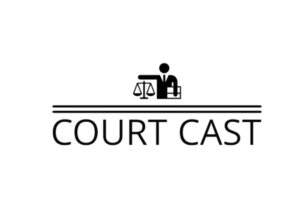Contents
- Introduction
- Historical Background
- Structure of the Code of Civil Procedure (CPC)
- Body of the Code
- First Schedule
- Rules and Orders
- Sections and Orders Table
- Key Provisions
- Table: Important Sections
- Table: Important Orders
- Jurisdiction
- Types of Jurisdiction
- Jurisdictional Issues
- Suits of Civil Nature
- Definition
- Differentiating Civil Suits from Other Suits
- Pleadings
- Purpose and Importance
- Rules and Contents
- Table: Common Types of Pleadings
- Appearance and Examination of Parties
- Interim Orders
- Trial
- Commencement
- Stages
- Evidence and Witness Examination
- Judgment and Decree
- Contents
- Execution
- Appeals
- Types
- Grounds
- Reference, Review, and Revision
- Special Laws and CPC
- Key Points to Remember
- Further Resources
1. Introduction
The Code of Civil Procedure, 1908 (CPC) is a critical piece of legislation that governs civil proceedings in India. This Practice Note provides a comprehensive guide for lawyers on how to interpret and apply the provisions of the CPC in the practical conduct of civil cases. It aims to provide clarity, context, and actionable insights.
2. Historical Background
The Code of Civil Procedure, 1908, replaced the Code of Civil Procedure, 1882. It has undergone several amendments to incorporate changes necessitated by evolving judicial precedents and societal needs.
3. Structure of the Code of Civil Procedure (CPC)
3.1. Body of the Code
It contains 158 sections, which provide the general principles and provisions applicable to civil proceedings.
3.2. First Schedule
It contains 51 Orders and Rules. Orders provide the classification of topics and the Rules under each Order prescribe the procedure for that topic.
3.3. Rules and Orders
State governments are empowered to make rules, and High Courts to frame rules regarding certain topics, and to annul or alter rules in the First Schedule.
3.4. Sections and Orders Table
| Sections | Content |
|---|---|
| 1 to 158 | General Principles and Provisions |
| Orders | Content |
|---|---|
| 1 to 51 | Detailed Procedure on Various Aspects |
4. Key Provisions
4.1. Table: Important Sections
| Section | Content |
|---|---|
| S. 9 | Courts to try all civil suits unless barred |
| S. 10 | Stay of suit |
| S. 11 | Res Judicata |
| S. 20 | Other suits to be instituted where defendants reside |
| S. 80 | Notice |
4.2. Table: Important Orders
| Order | Content |
|---|---|
| O. 6 | Pleadings |
| O. 7 | Plaint |
| O. 8 | Written Statement, Set-off & Counter-claim |
| O. 21 | Execution of Decrees and Orders |
5. Jurisdiction
5.1. Types of Jurisdiction
- Territorial Jurisdiction: Area within which a court can exercise its authority.
- Pecuniary Jurisdiction: Monetary limit up to which a court can entertain a suit.
- Subject Matter Jurisdiction: Matters that a court has authority to adjudicate.
5.2. Jurisdictional Issues
- Lack of Jurisdiction: A court cannot pass a decree if it lacks jurisdiction.
- Bar on Jurisdiction: Certain matters are specifically barred from being adjudicated by civil courts.
6. Suits of Civil Nature
6.1. Definition
Suits wherein rights to property, enforce contracts, recover damages, etc., are civil in nature.
6.2. Differentiating Civil Suits from Other Suits
- Criminal proceedings, writ petitions, etc., are not considered as civil suits.
7. Pleadings
7.1. Purpose and Importance
Pleadings define the scope of the dispute.
7.2. Rules and Contents
Must contain facts constituting the cause of action and when the relief is based on a law, the law must be mentioned.
7.3. Table: Common Types of Pleadings
| Pleading | Purpose |
|---|---|
| Plaint | To initiate a civil suit |
| Written Statement | To rebut the allegations made in the plaint |
| Set-off & Counter-claim | To make a claim against the plaintiff |
8. Appearance and Examination of Parties
This stage involves the appearance of the parties before the court and their examination.
9. Interim Orders
Interim orders such as injunctions, attachments, etc., can be passed by the court.
10. Trial
10.1. Commencement
Trial commences after issues are framed.
10.2. Stages
Framing of issues, recording of evidence, final hearing.
10.3. Evidence and Witness Examination
Evidence is presented to support claims, and witnesses are examined.
11. Judgment and Decree
11.1. Contents
Judgment must contain a concise statement of the case, the points for determination, the decision, and the reasons for such decision.
11.2. Execution
Decree can be executed by the court which passed it.
12. Appeals
12.1. Types
Original Appeals, Appellate Appeals, Second Appeals.
12.2. Grounds
Error of law, perversity of facts, etc.
13. Reference, Review, and Revision
These are mechanisms for re-examination of a case by the court.
14. Special Laws and CPC
Some laws require a modified application of the CPC. Lawyers must be cognizant of these modifications.
15. Key Points to Remember
- Analyze jurisdiction.
- Ensure pleadings are accurate and complete.
- Keep abreast with amendments and landmark judgments.
- Utilize provisions judiciously.
16. Further Resources
- The Code of Civil Procedure, 1908 (Bare Act)
- Annual Civil Manual
- Law Journals
- Online legal databases


